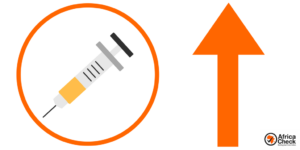This article is more than 6 years old
| NOTE: These statistics were accurate when they were released. Please consult our latest factsheet for the most recent statistics. |
The South African Police Service released the country's crime statistics for 1 April 2016 to 31 March 2017 at the end of October 2017.
The crime statistics in this factsheet are presented in both absolute numbers (19,016 murders, for example) and crime rates (34.1 murders per 100,000). The crime rate is used to allow fair comparisons between years, given that populations generally grow.
We have summarised the main crimes of public interest in this factsheet.
(Note: When the South African police released the crime statistics on 24 October 2017 they did not disclose which population estimates had been used to calculate the crime rates. This factsheet previously contained crime rates calculated with the most recent estimates for 2015 and 2016, which were released in Statistics South Africa’s 2017 mid-year population estimates. The police informed Africa Check on 2 November 2017 that they used Statistics South Africa's population estimates for the end of September of each financial year. This factsheet has been updated to reflect that.)
1. Murder
 Murder is the unlawful and intentional killing of another person. It is the most reliable crime statistic. This is because, according to Gareth Newham from the Institute for Security Studies, most murders can be independently verified.
Murder is the unlawful and intentional killing of another person. It is the most reliable crime statistic. This is because, according to Gareth Newham from the Institute for Security Studies, most murders can be independently verified. In 2016/17, the police recorded a total of 19,016 murders, up from 18,673 murders in 2015/16. The murder rate increased marginally from 34 to 34.1 per 100,000 people. The Eastern Cape province had the highest murder rate at 55.9 per 100,000 people.
In 2016/17, an average of 52.1 people were murdered every day.
Attempted Murder
A total of 18,205 attempted murders were reported to the police in 2016/17, up from 18,127 the previous year. The attempted murder rate decreased from 33 to 32.6 per 100,000 people.
READ: Where murder happens in South Africa
2. Sexual Offences
The sexual offences crime category contains the crimes detailed in the Criminal Law (Sexual Offences and Related Matters) Act. Crimes that fall under this broad category include rape, compelled rape, sexual assault, incest, bestiality, statutory rape and sexual grooming of children, among others.
In 2016/17, a total of 49,660 sexual offences were recorded by the police, down from 51,895 in 2015/16. The far majority of the sexual offences recorded were rapes, followed by sexual assaults.
Rape
 Rape is an offence included under the broad category of sexual offences.
Rape is an offence included under the broad category of sexual offences. South Africa’s legal definition of rape is very broad. It includes the oral, anal or vaginal penetration of a person (male or female) with a genital organ, anal or vaginal penetration with any object and the penetration of a person’s mouth with the genital organs of an animal
The police recorded a total of 39,828 rapes in 2016/17, down from 41,503 in 2015/16. An average of 109.1 rapes were recorded each day.
The rape rate decreased from 75.5 to 71.3 per 100,000 people. The Eastern Cape had the highest rape rate at 105.3 per 100,000 people.
The Institute for Security Studies warns that “the rape statistics recorded by the police cannot be taken as an accurate measure of either the extent or trend of this crime”.
Unfortunately, there is no recent, nationally representative under-reporting rate for South Africa that can be used to estimate the number of rapes committed each year.
GUIDE: Rape statistics in South Africa
Sexual assault
The police recorded a total of 6,271 sexual assaults, up marginally from 6,212 in 2015/16.
3. Assault
Common assault
 Common assault is the “unlawful and intentional direct and indirect application of force to the body of another person” or “threat of application of immediate personal violence to another”.
Common assault is the “unlawful and intentional direct and indirect application of force to the body of another person” or “threat of application of immediate personal violence to another”.In 2016/17, 156,450 common assaults were recorded. On average, 428.6 people were victims of common assault every day.
The assault rate decreased from 301.1 per 100,000 people to 280.2 in 2016/17.
The Institute for Security Studies cautions that these statistics may not reflect reality: “Police statistics for assault are notoriously unreliable because most victims don’t report these crimes to the police. Since the victim and perpetrator may be related (such as in a case of domestic violence) victims are often reluctant to disclose assault.”
Assault with the intent to inflict grievous bodily harm
In 2016/17, 170,616 assaults with the intent to inflict grievous bodily harm were recorded. This means on average 467.4 assaults with the intent to inflict grievous bodily harm were recorded every day.
The rate of these type of assaults decreased from 332.8 per 100,000 people in 2015/16 to 305.5 in 2016/17.
4. Robbery
Common Robbery
 A robbery is committed when a person unlawfully and intentionally forcefully removes and appropriates property belonging to another person.
A robbery is committed when a person unlawfully and intentionally forcefully removes and appropriates property belonging to another person.In 2016/17, 53,418 common robberies were recorded, down from 54,110 the year before.
The robbery rate decreased from 98.4 per 100,000 people in 2015/16 to 95.7 in 2016/17.
On average, 146.4 common robberies were recorded each day.
Robbery with aggravating circumstances
Robbery with aggravating circumstances occurs when a person uses a gun or weapon to unlawfully and intentionally forcefully remove property belonging to another person.
In 2016/17, 140,956 robberies with aggravating circumstances were recorded. This is a 6.4% increase from 2015/16.
The robbery with aggravating circumstances rate increased from 241.1 in 2015/16 to 252.4 in 2016/17.
On average, 386.2 robberies with aggravating circumstances were recorded each day.
House robbery
 House robberies occur when people are confronted in their homes and are victims of theft.
House robberies occur when people are confronted in their homes and are victims of theft. In 2016/17, there were 22,343 incidents of house robbery recorded. On average, 61.2 households were robbed each day.
The house robbery rate increased from 37.9 per 100,000 people in 2015/16 to 40 in 2016/17.
South Africa’s 2016/17 victims of crime survey revealed that only 56.7% of victims reported the crime to the police.

5. Hijacking of cars
In 2016/17, the police recorded 16,717 carjacking incidents in South Africa. This was the highest number recorded in the past ten years.
The hijacking of cars increased 14.5% from the 2015/16 figure of 14,602.
On average, 45.8 cars were hijacked per day in 2016/17. Over half of the crimes occurred in Gauteng.
6. House burglary
 A house burglary is committed when a person “unlawfully and intentionally breaks into a building” with the intention to take something on the premises.
A house burglary is committed when a person “unlawfully and intentionally breaks into a building” with the intention to take something on the premises. It was reported as the most feared crime in South Africa in the 2016/17 Victims of crime survey.
In 2016/17, 246,654 house burglaries were recorded - an average of 675.8 houses every day.
The house burglary rate decreased from 455.9 in 2015/16 to 441.7 in 2016/17.
South Africa’s 2016/17 victims of crime survey revealed that 28.3% of house burglary victims did not report the crime to the police because they thought the police would not act.
7. Theft of car or motorcycle
In 2016/17, 53,307 cars or motorcycles were stolen - an average of 146 each day. This is down from 53,809 in 2015/16.
8. Drug-related offences
 This crime category includes the crimes of use, possession of and dealing in drugs.
This crime category includes the crimes of use, possession of and dealing in drugs.The police note that this crime category is “usually not reported to the police by members of the public. These crimes come to attention primarily as a result of police actions like roadblocks and searches.”
When drug-related crimes show an increase it is not always a bad thing: “An increase in these crimes may actually indicate that the police are more active, whereas a decrease may indicate reduced police activity.”
In 2016/17, the police recorded 292,689 - an average of 801.9 offences each day. This means that 524.1 crimes were recorded for every 100,000 people in the country, up from 471.5 in 2015/16.
Additional reading:
https://africacheck.org/factsheets/a-guide-to-crime-statistics-in-south-africa-what-you-need-to-know/
https://africacheck.org/2015/10/07/where-murder-happens-in-south-africa/
https://africacheck.org/factsheets/factsheet-south-africas-201516-crime-statistics/


Add new comment